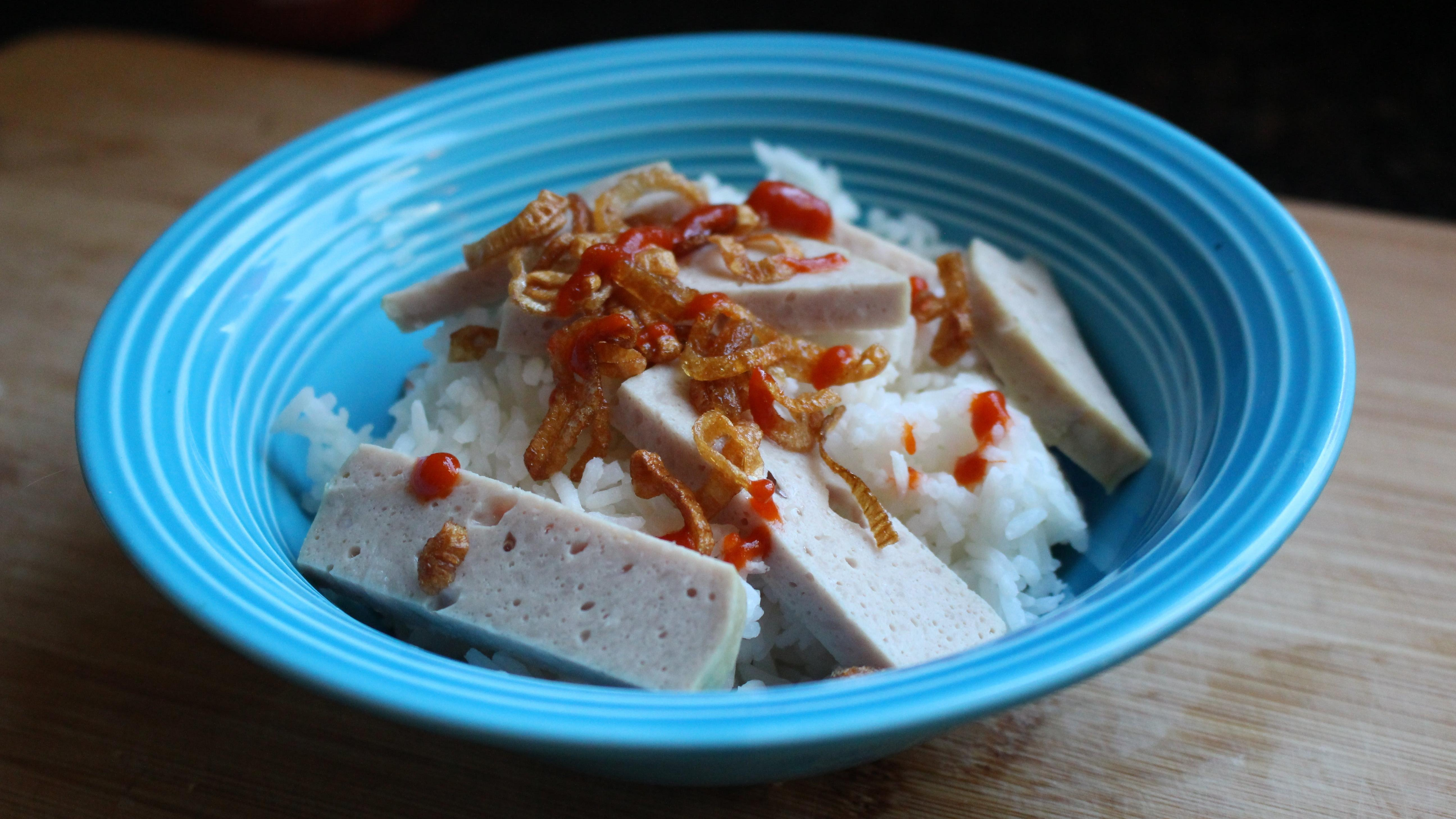A Guide To Cha Lua, The Quick And Easy Vietnamese Pork Roll
How this Vietnamese pork roll came to be my meat of choice.
As a child of a working mother, I hardly ever saw my mom before I headed off to school. Instead of a "good morning," I was often greeted with the scent of cha lua, the quintessential Vietnamese pork sausage that's had a prominent role in my family's meals for generations, that lingered in the kitchen. I didn't exactly mind, for the smell of minced meat wrapped in a roll tucked inside banana leaves made for a great meal.
As a kid growing up in Vietnam, I was a picky eater and preferred to eat rice with nothing but white sugar sprinkled on top. Much to my mother's chagrin, she could not convince me to eat a bowl of rice with anything else, until she introduced me to cha lua, heaping slices next to a bed of jasmine rice with a dash of soy sauce on top. It was a perfect combination of umami and protein, and it was soft enough that my mom could feed it to me as a toddler. I'd gobble these up like someone thirsty for water, and I kept asking for more.
What is cha lua?
Quick, easy and convenient, this pork roll is as versatile as the tradition itself. Depending on the region where one comes from in Vietnam, it has different names. Some call it cha bi while others call it cha hue. But regardless of what it's called, it's always known as a type of roll that keeps for a long time.
It is essentially a Vietnamese version of Spam or meat loaf. Some might argue that it is a type of ham. Unlike Spam, which comes in a can, cha lua comes double wrapped in banana leaves and aluminum foil (to ensure that water does not leak inside when it's steamed) and tied with a string outside. However, aluminum foil wasn't always part of this roll's overall look. It was only added when Vietnamese immigrants who came over to America in the 1970s couldn't find banana leaves, and thus, substituted with foil instead. Luckily, it kept its shape and since then, banana leaves have become more readily available. The result is that more than 40 years later, the roll is still wrapped in foil along with the banana leaves, a version that I usually find in my local Asian supermarket resting underneath a heat lamp in the deli area. And if you happen to pass by on a recent afternoon like I did with my two kids and my mom, you'll discover just how special this pork roll is.
This particular pork roll invited us in with its scent, but what initially drew a lot of Vietnamese people to eat it on a regular basis is the versatility and affordability. A roll of cha lua normally costs around $7, and it can last for several days, for multiple meals. As the four of us made our way through the store, an image flashed in my head of being a child and eating slices of cha lua, which my mom often left on the counter (there were no refrigerators in Vietnam back in the 90s) in case I wanted to help myself.
How to serve cha lua
There are two versions of cha lua—one with peppercorns and one without. I prefer the one without, because I've always believed that adding spices to a meal should be a person's choice. At any rate, you can add cha lua to a variety of dishes, including banh mi sandwiches, bun moc (a northern style soup), or bánh giầy (a traditional rice cake also wrapped in banana leaves), or my favorite: bánh cuốn (steamed rice rolls). For a basic, no-fuss kind of meal that only takes several minutes but the result can last for hours, you can add additional things like shredded dried pork, soy sauce or hot sauce, or even steamed vegetables.
These days, my mom prefers to cut the cha lua into slices and throw them on top of cooked vermicelli noodles, sprinkle it with mint and Thai basil along with some of her special fried onions, and top it with fish sauce or nuoc mam. This is exactly what she did when we came back to her apartment from the supermarket that afternoon.
After she unloaded her groceries, which included some fish, a pork roll, and some vegetables, she asked me if I was hungry. "Of course," I replied. "I'm starving." Going grocery shopping with two young kids and a mother can do that to you. My stomach was growling.
She nodded and asked if I wanted to have some noodles. I said yes. And for the next 10 minutes, while she cooked up the vermicelli noodles and gathered all the additions to our meal, I watched her slice into the pork roll (one without the peppercorns, of course) once again, and I'm transported back to my childhood when I ate these almost everyday with rice. Mixed with noodles, cha lua can be eaten cold, but my mom and I prefer the opposite. As we sat and ate, I'm reminded of how it's made such a difference in my and my mom's life. Upon seeing the meat, my kids ambled over and asked for a bite. Soon enough, they were eating it in a bowl of white rice with soy sauce, just like I did when I was their age.
